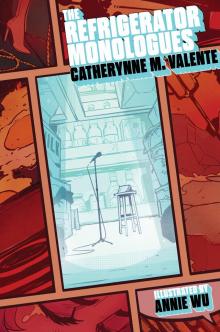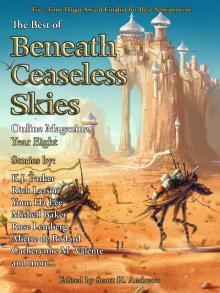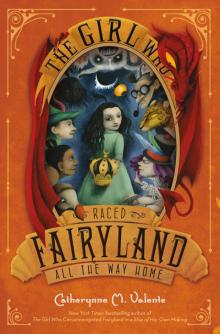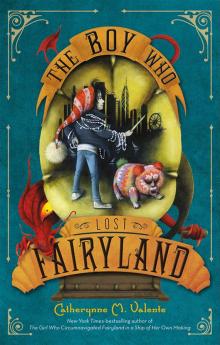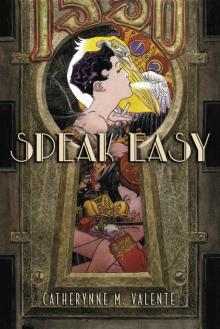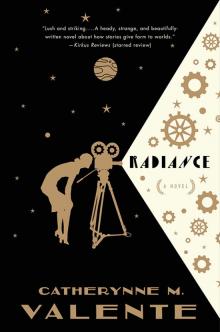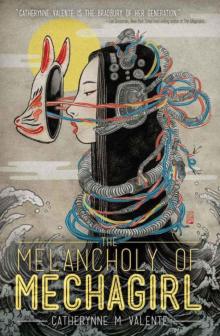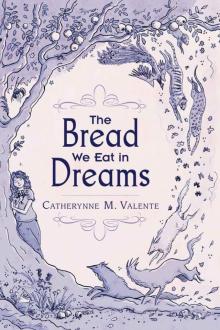


Inquisition, Page 23
Green, Toby
This was an intolerable situation for Spanish society, which defined itself through its adherence to the Catholic religion. The bishop of Segorbe – where Maria Xaramfa kept her mosque – held in 1595 that the ‘moriscos are apostates and live according to the Muhammadan law’.97 This was not something that Spain and the Inquisition could countenance, and nor was the growing physical aggression displayed by moriscos. In Belchite in Aragon moriscos attacked ministers of the Inquisition with swords, lances and guns whenever they arrived to try to arrest someone.98 In 1591 the moriscos of Gea de Albarracín – one of the haunts of Diego de Arcos of Teruel – attacked the jail of the Inquisition, wounding some inquisitorial officers and helping one of their friends to escape.99 In 1608 the investigator Gregorio López Madera found eighty-three corpses in the region of Hornachos killed by local moriscos for denouncing them or collaborating with the Inquisition.100
The situation had become grave. The Turks continued their activities in the western Mediterranean, threatening Spanish shipping and supplies, while in Spain they had a contingent of allies, all of whom would jump at the chance to destroy the state. In April 1609 the Spanish crown took the decision that it had no alternative but to expel all moriscos from Spain.
Valencia 1609
And [the moriscos] came out of their houses and made to embark . . . and along the way they sold and gave away everything they had, selling wheat at two or three reales a bundle, which is an incredibly low price [in Valencia] . . .
And many were found dead in the hills, some of hunger after they had surrendered, others having killed themselves voluntarily [sic] so that they did not have to leave . . .
Many people have been led to extremes in their desire to stay, offering their throats to a knife rather than leave . . . others have hid and fled so as not to leave, making vigorous demonstrations of their Christianity and choosing rather the condition of slavery than departure from Spain . . .
There was one fifteen-year-old girl in particular who made great efforts to stay . . . and God was served in giving her a serious illness which could save her, as, seeing herself threatened by the illness she called a Christian who was passing her home and asked him to bring her a confessor, as she wanted to die as a good Christian, and this was done so that the girl was able to confess and give her soul to God . . ..101
THE DECISION TO EXPEL the moriscos was a political one, taken by the crown and not by the Inquisition, yet the Inquisition provided critical support to the decision through its databank of trial evidence which ‘proved’ the universal apostasy of the moriscos102 and its fomentation of the hatred which the moriscos felt towards the rest of society. It was also a popular decision. When the edict of expulsion was published on 22 August 1609 ‘such was the crowd of ordinary people that came to hear the pronouncement, that people knocked one another down amid the general applause and happiness’.103
This banishment of a significant part of the population had been gestating for decades. It had first been mooted at the Council of Lisbon in 1582 when virtually the entire ecclesiastical hierarchy had favoured it.104 Thereafter it had been raised as a possibility by various inquisitors and royal councils until a council of January 1602 led by Philip III’s chief minister the duke of Lerma planned virtually every detail of the expulsion.105 The final push came out of fear: the Council of State wrote in April 1609 that ‘the fear of the Moors . . . is considerable, and even the duke of Lerma believes that they might be able to conquer Spain’.106
What had gestated with the political will to expel the moriscos was the psychological conditioning of the population. The Old Christians now felt essentially different from people who were physically identical to themselves. Under the rigid ideology of the Inquisition the mass of Spanish people had been indoctrinated into believing that signs of cultural difference were signs of treachery and of a desire to destroy them. Numerous chroniclers created stereotypes of moriscos as ugly, abnormal, different.107 Slowly, people had come to see the residues of Spain’s Muslim population in this light. Slowly, the groundwork had been laid for the enemy’s destruction.
The final decree of expulsion was nothing if not pragmatic. The moriscos of Valencia were dealt with first, in 1609. Six in every one hundred morisco households were ordered to remain to instruct incomers to their lands on agricultural techniques of which they were the masters. Fixed morisco property was to be given to their feudal lords in order to compensate them for the loss of their workforce. The moriscos were given only three days to leave their homes and clear all their goods.108 These were people who were no longer deemed worthy of consideration.
Once the Valenciano moriscos had been dispatched, it was the turn of the Aragonese. In the spring of 1610 the moriscos there had ‘stopped all their dealings and labour in the land and [had] sold everything that they owned, right down to beds, plates and bowls’.109 On 16 April Miguel Santos de San Pedras, inquisitor of Zaragoza, declared that what little the Aragonese moriscos had left would be gone in a few days and that ‘famine and epidemics are bound to come among them . . . and seeing themselves starving they are bound to rob and kill Christians and commit atrocious crimes’.110 Philip III signed the expulsion order on 29 May 1610, precipitating a free-for-all between the moneylenders and the feudal lords of the Aragonese moriscos, who suddenly found themselves without any rents with which to pay off their debts.111 Chaos and stagnation loomed.
In total, perhaps something over 300,000 moriscos were forced from Spain between 1609 and 1614.112 Most went to North Africa. In Oran (modern Algeria) over 116,000 arrived between 2 October and December 1609. Many were robbed and assaulted by bandits, as were many of those who went to Tremecen and Fez in Morocco.113 While in Tunisia the 50,000 moriscos who arrived were treated well, the rest suffered misery, poverty and death. They were frequently suspected of being renegade Christians by the Muslims of North Africa.114
Maybe it was in anticipation of this miserable fate that the banished were so reluctant to depart a country which had come to hate them. When the expulsion order was issued ‘the lamentations were such that in all the morisco settlements one could hear nothing but sobs and tears’.115 The processions of people down to the chosen ports of exile were as something out of biblical times, ‘exhausted with pain and tears . . . the men loaded down with their wives and children, and by those who were ailing, and old, and young, full of dust, sweating . . . some on foot, broken and badly dressed, shod with one shoe and one sandal . . . all of them greeting those who watched them, or met them, saying to them: “May the Lord watch over you . . . Gentlemen, may the Lord keep you.” ’116
Thus it was that the last vestiges of the Islamic population which had lived in Spain for 900 years departed, ‘tired, filled with pain, lost, oppressed, sad, confused, chased, furious, corrupted, annoyed, bored, thirsty and hungry’.117
IT IS DIFFICULT to erase the memory of a great civilization. The conquistadors tried this in Mexico, destroying the temples of the Aztecs, burning the idols which they found, complicit in destroying precious libraries of Aztec codices. Even today, however, ruined temples which have lain undetected for centuries re-emerge from five centuries of sleeping sediment; when part of the subway system of Mexico City was being built in the 1960s the great temple of the Aztecs at Tenochtitlan emerged into the tunnels of the modern underground.
And when the Spanish came to build the churches which would replace the temples of Mesoamerica in Mexico, a notable thing happened. In Tlaxcala, for instance, a church was built which can still be seen today, with a precious wooden ceiling in the mudejar style which Spain had inherited from its Islamic past via Muslim craftsmen. The official ideology which went with imperial expansion averred that there was only one path which could be followed, yet that path was itself a mixture of Christian, Jewish and Muslim traditions.
What, finally, is one to make of a society which makes every effort to destroy a part of itself and to impose unity of belief when so much of its strength and power had come from its dive
rsity? It seems like an exercise in self-mutilation, even an unconscious form of self-hatred.
Where paranoia triumphs, every fact can confirm the paranoiac’s prejudices. There were, it was true, strong geopolitical reasons for the Spanish to be wary of Muslim sympathizers: there had been repeated battles between the Spanish and the Turks in the 1570s which emphasized the potential dangers of a Muslim enemy.118 Yet as we have seen the marginalization of the ‘fifth column’ at home merely made it more aggressive and impossible to assimilate.
While the Inquisition was not directly responsible for the tragedy of the morisco expulsion, it was the enforcer of pariah status for moriscos in the late 16th century. Far from effecting a reconciliation between moriscos and Old Christians, it merely promoted extremism on both sides. The Muslims, or mudejares, who lived in Spain before 1492 had been Hispanicized and acculturated;119 they ought therefore to have been on the road to assimilation and integration. With its torture, its taxes on every morisco in Aragon and Valencia and its punishments, the Inquisition, far from ensuring their conversion to the fold, merely made them obstinate and more ready to turn to Islam.120
Just as with the conversos in the 15th century, therefore, the Inquisition’s activities provoked the very heresy which it claimed to be attempting to extirpate.121 Whereas in Portugal, after the reconquest of the 13th century the Moorish population integrated thoroughly into society,122 in Spain in the 16th century the Inquisition made this an impossibility.
At last! All the marginalized and ambiguous groups in Spanish society had been dealt with. But victory was temporary, bitter, a harbinger of failure. With all its obvious enemies destroyed, the hunt for the enemy would become increasingly difficult to sustain and increasingly fractious.
¡Ay, los moriscos! Seen as Muslims by the Christians and as Christians by the Muslims, theirs was indeed a miserable fate. Neither Catholic Spain nor Muslim North Africa could countenance this ambiguous and potentially seditious group in their midst.123 In spite of everything that had happened to them, many preserved their Christian faith in the most trying of circumstances in exile. By 1613 news had reached Minorca that rich moriscos were living as Christians in Algiers.124 Some dived off the ships where they worked and swam ashore so that they could return to Spain and live openly as Christians.125
The moriscos were not, and had never been, all Christians or all Muslims. Just like the conversos individuals among them professed a wide range of beliefs. But nuances of belief were not something the Inquisition could understand. Thus was it one of the principal forces in their obliteration.
In Seville departing Christian moriscos made offerings to churches and one of them gave 4,000 ducats to the Virgin of Iniestra. Others left bequests so that prayers could be said for their souls in the churches where they had always worshipped and attempted to find solace on their troubled voyage towards God.126 Their tragedy ebbed out of their lives along with the ballad which they sang as they left the banks of the Guadalquivir:
And the morisca women
Wringing their whitened hands
Raising their eyes to the heavens
Crying out through their tears:
Ay, Sevilla, my home!
Ay, Church of San Pablo
San Andrés, Santa Marina
San Julián and San Marcos! . . .
Crying out for the help
Of the Virgin of the Rosary
And of the Virgin of Bethlehem:
Let her protect us
As much with her feelings
As she does the babes in arms
Whom she raised at her breasts,
And with her milk brought them lamentation.127
Chapter Eight
PURITY AT ALL COSTS
Squarely opposed to religious concepts which had dominated Christian thinking for centuries . . .
Cinctorres (Valencia) 1705
ONE OF THE FEW consolations for the persecuted ought, perhaps, to be that their travails can come to an end with their end; there would appear to be little suffering that can be meted out to someone once their flesh has melded into smoke and ashes. And yet, while descent from a convicted heretic had long been social death in Iberia, the absence of ‘heretical classes’ following the expulsion of the moriscos gave the question of ancestry a new importance in Spain.
From this point on, the impact of the Inquisition was to be most visible on a social level, in a different register to the great persecutions of the late 15th and the 16th centuries. One of the principal arenas for this was the obsession with what was called limpieza de sangre – purity of blood. This fixation spread also to Portugal, making Iberia a unique case of a society with racialist legislation in early modern Europe. Yet the new laws did not foster feelings of well-being; instead, a sense of decline set in accompanied by the increasing vigilance over the descendants of the conversos and the moriscos.
And so, back to Cinctorres. Earlier we saw how, in this remote town in the Valenciano hinterland in the 1530s, the teacher Miguel Costa was accused of Lutheranism and burnt to death at an auto in Valencia.*1 In the early 1700s Costa’s distant descendants, or alleged descendants, found that they could not be rid of their ancestor. He plagued them like a recurring bout of ague.
In 1705 an extraordinary legal petition was made by one Antonio Costa in an attempt to rid himself of this disease. Costa described in desperate terms the problems which he was facing in Cinctorres:
Many years ago his father [also called] Antonio Costa applied to become a familiar of the Inquisition of Valencia. And with the Inquisition having ordered inquiries to be made regarding the purity of his ancestry, he died before having achieved his aim. And even though since his father’s death Antonio Costa [the younger] has several times written to the Tribunal [of the Inquisition], offering to pay whatever costs might be necessary to conclude this inquiry . . . he has never received a reply; the result has been that such scandal and defamation has fallen upon his family, which used to be among the noblest of the district [of Cinctorres], that they have become unmarriageable, as two of his children are finding to their cost today.1
The more one examines the case, the more surreal it seems. Antonio Costa the Elder*2 had submitted his original petition to become an inquisitorial official on 4 February 1671, fully thirty-four years before his son’s protest. The problems which he had run into derived from the widespread suspicion that he was descended from the Miguel Costa ‘relaxed’ by the Inquisition in 1536. Thus the problems of Antonio Costa the Younger stemmed directly from one dubious case of Lutheranism brought 170 years before.
It is worth trying to imagine the atmosphere in the Costa household of the early 18th century. Spain was in decline and increasingly cut off. In the middle of the 17th century goods had still been being taken to Madrid on donkeys and mules, rather than by cart as in France.2 In rural areas many villages had been abandoned; other were isolated and underpopulated, often over a day’s journey from one another.3 Yet the growing hardships did not prevent a reputation for arrogance, as there was ‘no one [in Spain] who does not think themselves to be a hundred times more important than they are’.4
In the Costa household such arrogance was of course tempered by the bad reputation which the family bloodline possessed. The Costas must have hated their wretched namesakes who had been punished by the Inquisition so many years before. The family entered a world of isolation and suspicion, and all for the sake of people whom they would never meet, who had been dead for almost two centuries and who may or may not have been ancestors of theirs.
The Cinctorres case dragged on. The archives of the Inquisition of Valencia were mined and the trial of Miguel Costa from 1536 was appended to the petition of Antonio the Elder. Expense sheets from the Tribunal of Valencia were produced from 1533, 1536, 1544, 1572, 1606 and 1666. The problem that Costa faced was that many of the witnesses in the initial inquiry into his lineage declared that he was descended from conversos. Eventually, after twelve years of bureaucratic yo-yos, he wrote a
letter on 20 April 1684 saying that he suspected that some witnesses thought him descended from the brothers Bartolomé and Miguel whose sanbenitos hung in the church of Morella.
Antonio the Elder was nothing if not methodical. In order to prove that he was not descended from these Lutheran heretics, he included in his deposition the marriage vows of those whom he claimed as his ancestors. He denied he was related to Bartolomé and Miguel at all. What a ridiculous suggestion! Instead, he was descended from Antonio Costa, the son of Vicente Costa and Barbara Moliner, who had married in 1533. Antonio had been born in 1539, and had married Barbara Polo of Cinctorres in 1572. The marriage certificates of these ancestors were also included in an exhaustive legal deposition which ran to several hundred pages.
This sort of bureaucratic farrago was normal by the second half of the 17th century. It was vital for everyone from the greatest lord to his poorest peasant to be able to prove their ancestry going back six, seven, eight generations and more, so that they and their family would not become pariahs. If pure ancestry could not be proved, then it would have to be invented. But even when people went to the sort of trouble and expense that Antonio the Elder had in 1684, success was not guaranteed; twenty-one years later, as we have seen from the petition of his son, the matter had not been resolved, and the final ruling was not issued until 1713, 176 years after Miguel Costa had been ‘relaxed’ at an auto in the noble and elegant city of Valencia.




